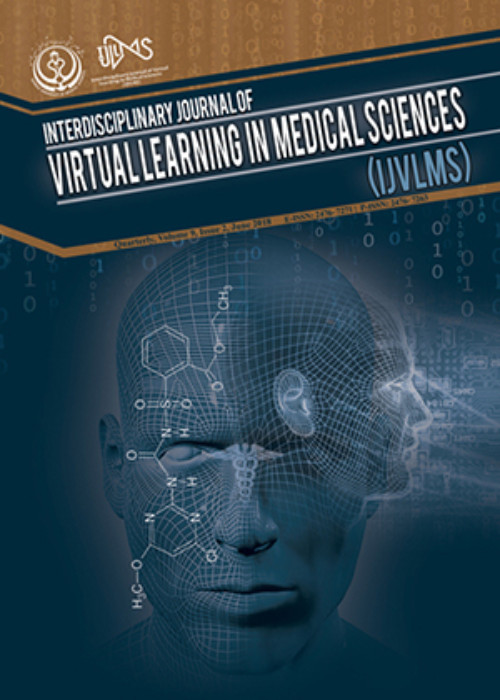The Teaching Methods in Translation Courses: E-Learning Resources
Author(s):
Article Type:
Review Article (دارای رتبه معتبر)
Abstract:
Context
This study was carried out during the second semester of academic year 2017 - 2018 at the Islamic Azad University of Tehran, North and South branches, aiming at providing a description of the attitudes of English-major students towards the teaching methods in translation courses (TCs).
Evidence Acquisition
A multi-item Likert-scale questionnaire was developed based on the principles applied in the three traditional, complex and modern methods of teaching for collecting research data. Cronbach’s alpha was used for estimating the reliability of the items. Besides, experts’ judgment and item analysis were used for the coverage and relevance of content and construct validity, through which a questionnaire with 32 items was developed. The number of participants was determined based on the margin of error (5%) and 95% confidence level for the population size of 140. Accordingly, the required sample size for the study was calculated at 100. The respondents were randomly selected from the population and were homogenized by the results obtained from the Preliminary English Test (PET). The students were at intermediate level of English proficiency with the mean score of 16.18 and standard deviation of .31.
Results
According to the participants’ viewpoints, although all the methods were common, but modern methods challenged the traditional and complex methods by emphasizing on the necessity of incorporation of the principles for assuring quality and relevance by applying various study resources like e-learning facilities.
Conclusions
It is not possible to consider any of the methods as superior, however, it is necessary to further adapt the principles included in any of the three methods to the local and novel needs. In other words, gaining the viewpoints of learners as the final recipients of the methods would be helpful for instructors via enabling them to find out how subtle variations in methods might lead learners to various directions depending on their attitudes and the use of e-learning resources, based on which the necessary adaptations are made in the application of methods.Language:
English
Published:
Interdisciplinary Journal of Virtual Learning in Medical Sciences, Volume:10 Issue: 1, Mar 2019
Page:
1
magiran.com/p1952645
دانلود و مطالعه متن این مقاله با یکی از روشهای زیر امکان پذیر است:
اشتراک شخصی
با عضویت و پرداخت آنلاین حق اشتراک یکساله به مبلغ 1,390,000ريال میتوانید 70 عنوان مطلب دانلود کنید!
اشتراک سازمانی
به کتابخانه دانشگاه یا محل کار خود پیشنهاد کنید تا اشتراک سازمانی این پایگاه را برای دسترسی نامحدود همه کاربران به متن مطالب تهیه نمایند!
توجه!
- حق عضویت دریافتی صرف حمایت از نشریات عضو و نگهداری، تکمیل و توسعه مگیران میشود.
- پرداخت حق اشتراک و دانلود مقالات اجازه بازنشر آن در سایر رسانههای چاپی و دیجیتال را به کاربر نمیدهد.
In order to view content subscription is required
Personal subscription
Subscribe magiran.com for 70 € euros via PayPal and download 70 articles during a year.
Organization subscription
Please contact us to subscribe your university or library for unlimited access!


